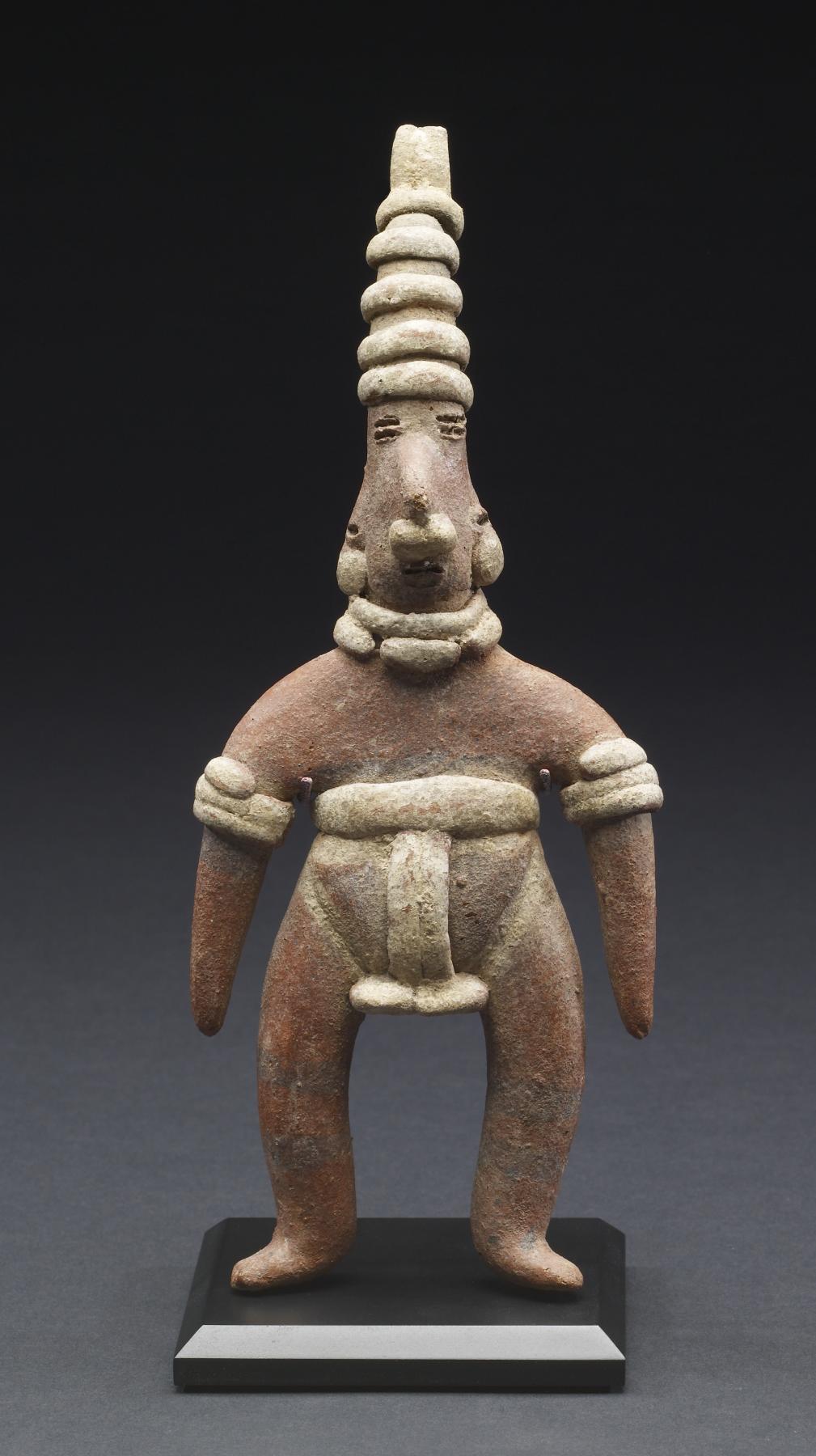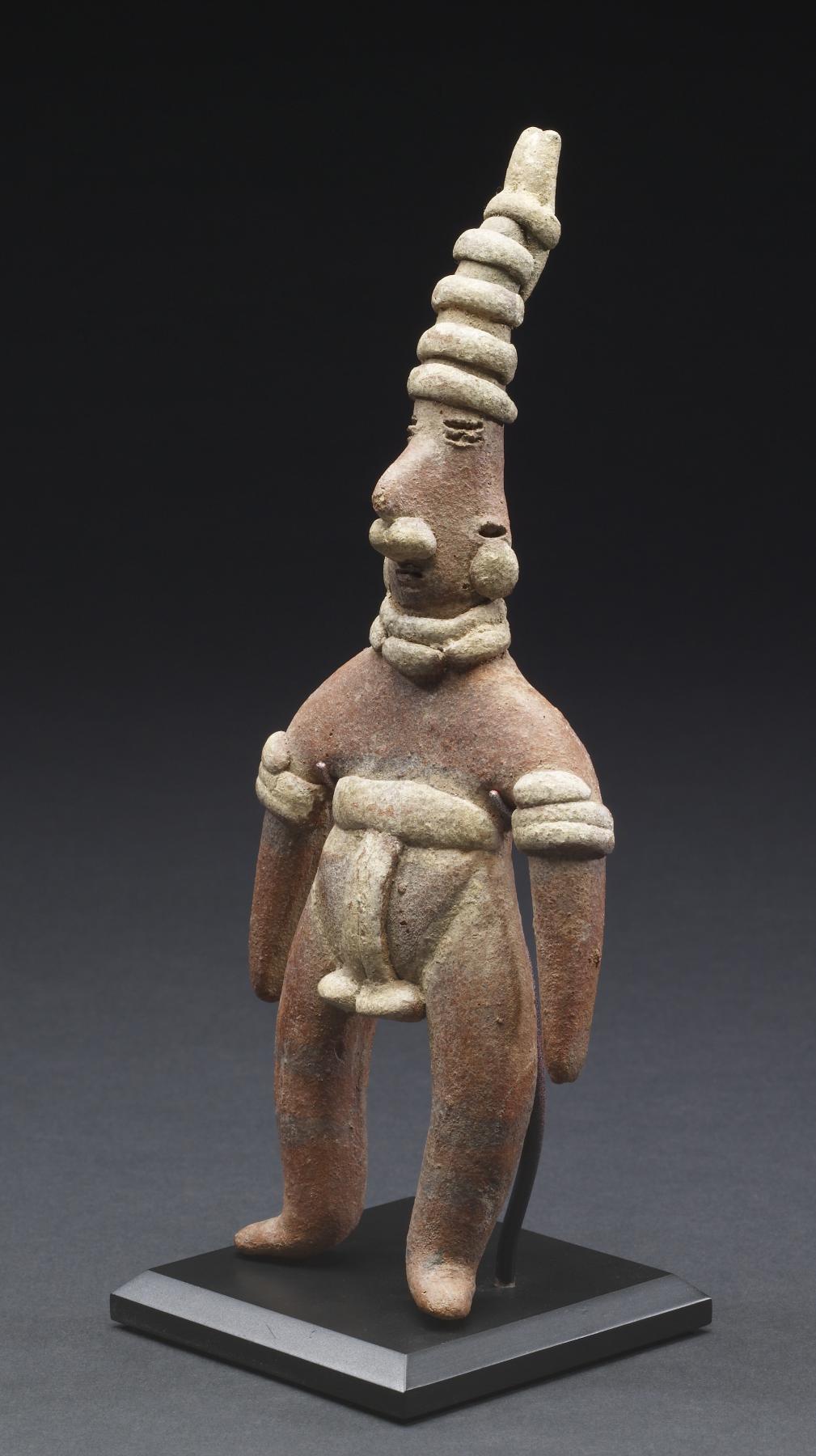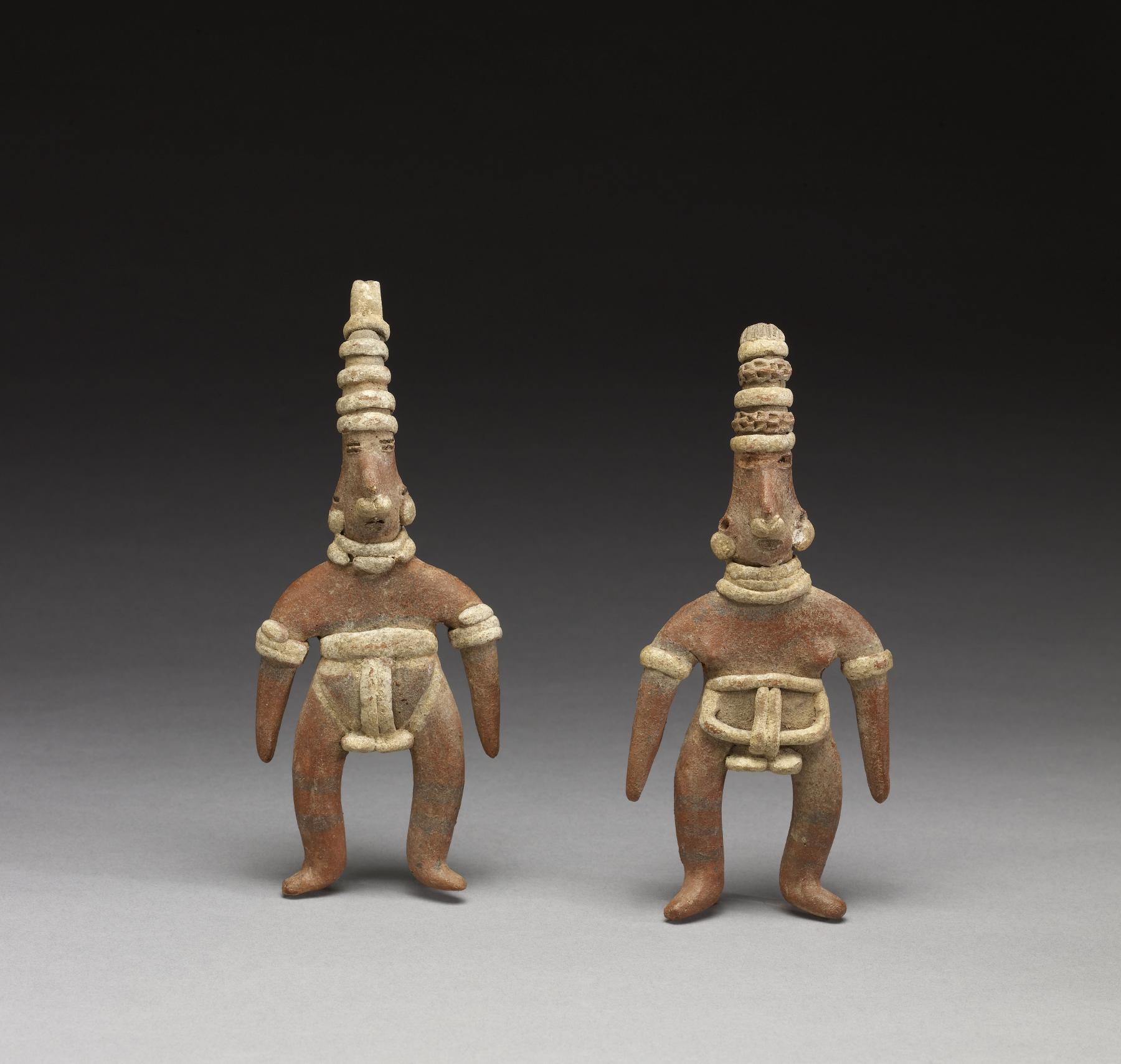Ballgame Performer
(Ancient Americas )
The Mesoamerican ballgame was part of a ceremonial complex that included dance, music, and drama, and often was associated with warfare and solemn rites of cosmic renewal. Its ceremonial components-from parades to ritual dance performances to sacrificial rites-constituted a potent collective activity that reinforced social cohesion. Given the importance of these ceremonies, it is not surprising that Mesoamerican art is filled with portrayals of ballplayers as performers. These figurines from the Jalisco-Colima area of West Mexico portray ballplayers bedecked in the wide belts and arm bands (arm protectors) typical of ballgame gear. Their pose communicates readiness for the intense action of the game, while their large ear and nose ornaments, ample necklaces, and multiple textile head bands suggest the kind of ornate attire frequently worn by performers.
Provenance
Provenance (from the French provenir, 'to come from/forth') is the chronology of the ownership, custody, or location of a historical object. Learn more about provenance at the Walters.
Acquired by Leonard Kalina; purchased by John G. Bourne, Santa Fe, New Mexico, between 1990 and 1999; given to Walters Art Museum, 2013.
Exhibitions
| 2012-2013 | Exploring Art of the Ancient Americas: The John Bourne Collection Gift. The Walters Art Museum, Baltimore; Frist Center for the Visual Arts, Nashville. |
Geographies
Mexico, Colima
(Place of Origin)
Mexico, Jalisco (Place of Origin)
Measurements
H: 7 11/16 x W: 3 1/8 x D: 1 1/4 in. (19.6 x 8 x 3.2 cm)
Credit Line
Gift of John G. Bourne, 2013
Location in Museum
Charles Street: Second Floor: Latin American Art / Arte Latinoamericano
Accession Number
In libraries, galleries, museums, and archives, an accession number is a unique identifier assigned to each object in the collection.
In libraries, galleries, museums, and archives, an accession number is a unique identifier assigned to each object in the collection.
2009.20.133









